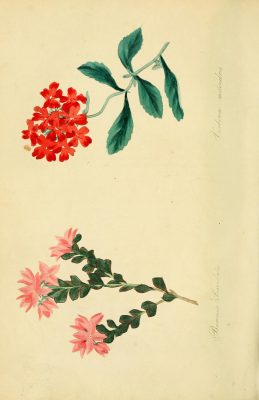It has never been easier to buy kimchi in central London than it is today. In the past few months alone, shiny storefronts of Oseyo stores – Korean supermarkets – have appeared on the streets of Charing Cross, Waterloo and Angel, inviting more people to consume the culture, neatly packaged and curated, than ever before. Such ubiquity of Korean produce feels very new, and indeed the cultural capital of South Korea is currently at a premium (in the late 1990s, the term ‘hallyu wave’ was coined to express the culture’s surging popularity across the globe). Here in London, the parts of it that we elect to take in are those of Samsung phones, BTS concerts and the gleaming skyscrapers that lacquer the skyline of the eleventh-largest economy in the world. As a country, Korea thus perceived is simply the ‘Miracle on the Han River’; it is held as aspirational, the ultimate capitalist success story.
Such success, however, acts as a veneer on a recent political past pockmarked by tragedy, cultural repression and violence – a much less palatable truth. In 1910, the peninsula was annexed as a colony of Japan, falling under a regime of extreme censorship and cultural suffocation. Up to hundreds of thousands of Korean women were forced into sexual slavery, known as ‘comfort women’. Liberation came when Japan surrendered to the allied forces in 1945, only for Korea to be torn in two by war in 1950. The Korean War is widely regarded as the first major proxy war of the Cold War – so-called because of major interference and vested interest from the US and Soviet Union. The country became a stage on which overseas conflicts could play out. Although a ceasefire was reached in 1953, tension between the two halves of the divided country have continued to simmer, and the USA still maintains a military headquarters in the South, incongruously named Camp Humphreys. Throughout the past fifty years, the South Korean government has been in turbulence – defined in turn by US-backed militant anti-communism, brutal military rule and corruption.
Kim Hyesoon, who began her poetic career in the 1980s, stated in a 2012 interview with Guernica that ‘when I became a poet, the Korean literary world expected women poets to sing passively of love.’ The poetic legacy that Korean women poets have inherited – called yoryu siin, or ‘women’s poetry’ – feels dissonant alongside the political trauma of the recent past. The resulting tension is difficult to sum up: difficult to package or posit in the framework of western literary tradition. In her translator’s note to Against Healing: Nine Korean Poets (2019), Tilted Axis Press’s collection of Korean poets, published in their ‘Translating Feminisms’ series, Emily Jungmin Yoon observes that ‘these women are, in my opinion, not interested in the function of poetry to heal. It is to hurt […] They are not trying to nurture the pains of the world.’ Instead, she suggests, they take this inheritance and find spaces within its incongruities in which to express a certain pain, a hurt, a brutality. The rejection of a feminine ‘heal[ing]’ role here brings to mind that idea of ‘comfort’. Yoon’s own collection, A Cruelty Special to Our Species (Ecco Press, 2018), is preoccupied by women ‘tricked or taken, carted to Japanese soldiers’ (‘Comfort’). As objects of ‘comfort’, Yoon demonstrates – horrifyingly – that these women exist only in the passive voice, for the use of Japanese soldiers: ‘She is girl. She is gravel. She is grabbed.’
Yoon is currently based in the US, and refracts this inherited trauma both through her own poetry and the translation of other Korean women’s poetry into English. Against Healing is delivered to the English reader in a beautifully presented – packaged – pamphlet, made easy to consume by the mechanisms of publishing. This adds another layer to the question of inheritance and expression: how do we negotiate thinking about the diaspora and poets writing in English versus those being published in translation? In her note, Yoon asserts that this selection ‘is made from pieces that struck and stunned this translator, out of the texts made most available in the time given to her’. Such collections are necessarily subjective. The lens through which these histories are presented to the English reader will always, already, have a perspective.
There was a man who,
at the end of coitus once, asked
If you’re going to live like this, why live?
If you’re going to live like this—
She doesn’t know why she has to live.
(‘Prostitute 1’, Yi Yeon-ju, tr. Emily Jungmin Yoon)
Yi’s poem claws at the grotesque, replete with ‘damned rats gnaw[ing] at the ceiling’. Her poem is infested with ‘cockroaches and itch mites’, and the ‘man’ too is cast in a parasitic light. After taking sex, he belittles the woman, pressing her for answers and pliancy. The speaker interrupts his repeated injunctions: ‘She doesn’t know why she has to live’. Her intrusion feels defiant – in nullifying his incessant demands to justify her life to him, she breaks away from the role, the character of ‘Prostitute 1’ that he expects her to play.
This retaliation against the expectations on women to heal, comfort, give care, also takes place, in many of these poems, around the figure of the mother. The mother in Choi Young-mi’s ‘Mother’s Poetry’ (Against Healing) ‘layer[s] today on top of yesterday […] Thriftily packing in life as if filling in the folds of kimchi’. Shin Hyeon-rim’s ‘Mommy can make a bowl of rice with her tears’ (‘Single Mom’, from Against Healing); the mother in Suji Kwock Kim’s ‘Middle Kingdom’ (from her 2003 collection Notes on a Divided Country) ‘chopped pieces / of her heart into the skillet’. All these women unite the maternal and the brutal with linguistic deftness, placing their works in a conversation that spans languages and continents (like Yoon, Kwock Kim is Korean-American, and explores her poetic inheritances primarily in English and through the translation of others). The mothers in these poems are dismembered when confined within rigid expectations of the maternal, and of what it means to provide.
Kim Hyesoon explores the cannibalisation of the mother figure further in ‘Dinner Menu’, from Autobiography of Death – her 2016 Griffin Prize-winning collection translated by Don Mee Choi. The collection traverses the ‘49 days that the human spirit roams before entering the cycle of reincarnation’; existing in the realm between life and death.
Today, Mommy cooks pan-fried hair
Yesterday, Mommy cooked braised thighs
Tomorrow, Mommy will cook sweet and sour finger
As a heavily context-reliant language, Korean is largely devoid of personal pronouns. Choi’s refusal to insert these into her translation gives at once an eerie lack of specificity and a haunting collectivism – at what point do the ‘pan-fried hair’, ‘braised thighs’ and ‘sweet and sour fingers’ stop belonging to the mother? Ambiguity gives rise to the sense of the ultimate sacrifice: not only to feed your children with yourself, but to relinquish ownership altogether. The plaintive repetition of ‘Mommy’ and the structure of the lines (she cooks, she cooked, she will cook) feel like an exercise in grammar, an education in sacrifice and consumption.
In an interview included in Autobiography of Death, Kim asks: ‘Wouldn’t it be wonderful if I could cook with raindrops, wind, or clouds like my country’s male, lyric poets?’ The resources of high lyricism, it’s implied, are unavailable to the woman poet; the ingredients that she chooses in her poetry are those of the grotesque, the violent and the maternal. In so doing, these contemporary female poets roundly reject the form of the male lyric. The male literary establishment is another structure that traditionally inflicts violence on women (the #MeToo movement has reached the Korean poetry scene in implicating Ko Un, who was previously lauded as something of a national poet). In forging new forms of expression – using form and language that belie easy interpretability, taking sources of solace and revealing their hostility – these women, as Kim Hyesoon has suggested, ‘are developing a terrain of poetry that is combative, visceral, subversive, inventive, and ontologically feminine.’ It is not so radical to suggest that marginalised groups may mistrust mainstream modes of expression that have never invited them in. The yoryu siin style which had stood dominant over the Korean female voice for so long has now been eschewed in favour of something less comfortable – less easy to consume.
The scrutiny of consumption at work here chimes with a more explicit indictment of US-style capitalism. Kim Seung-hee’s ‘Mother Standing Outside the Door’ portrays ‘Yoon-geum who was struck to death by Private Michael in a rented room in a camp town / Had a Coca-Cola bottle stuck to her privates’. The poem aligns sexual violence and economics, tying them together with an uneasy aggression. American influences can be seen all over Korea today – from the whitening creams that come with imported Western beauty standards, to the continued military presence in the peninsula. Prior to the 2016 relocation of their headquarters to Camp Humphreys – now the largest US military base overseas – the American army was based in Yongsan Garrison, in Seoul: a space which once served as base for the Imperial Japanese Army. The relegation of women to objects marketable for male consumption – as cheap and ubiquitous as Coca-Cola – brings to the fore the chauvinism of military and cultural imperialism.
These poems revel in their difficulty. They deliberately other themselves from traditional expectations of Korean women’s poetry in a conscious rejection of feminine pliancy. While thinking about these issues, I was struck by Matt Reeck’s recent Asymptote review of Kim Hyesoon’s A Drink of Red Mirror. Rather than observing this refusal to conform as defiance, he sees it as failure, asking:
To what extent does a foreign reader expect a sort of ethnography from their reading material? If I am any barometer, readers of foreign literature are interested in learning about a writer’s culture, society, and/or life […] Was I certain, when reading these poems, that they were Korean? I’m not sure I was.
Reeck’s confusion that Kim’s writing does not accord with his perceptions of ‘Koreanness’ is indicative of a wider issue with the consumption of a so-called ‘foreign identity’. There is a pressure on the ‘foreign writer’ to present themselves as an anthropological subject – but only in the aspects that ‘readers of foreign literature are interested in learning about’: neat, sanitised forms of difference. He places himself as a dispassionate arbiter – a ‘barometer’ – of this foreignness, thus distancing himself from any calls to empathy. In remaining blinkered by his limited perceptions of what is sufficiently ‘Korean’, Reeck fails to acknowledge any points of contact between the histories of a ‘West’ that he recognises, and a Korea that he doesn’t. Accountability is eschewed in favour of a meaningless othering and abstraction of what it means to be ‘foreign’. ‘Foreign identity’ is configured as something that a reader can browse detachedly on supermarket shelves: pick and choose to fit their own interests.
Kim’s work – and, indeed, the work of all these Korean poets – do not owe anything to the expectations of a ‘foreign reader’. In their refusal to comply with pre-approved forms of womanhood and ‘foreignness’, they make themselves difficult to consume; to state that this is a failure is, I think, missing the point. It is vital to have a multi-faceted view of any literature, or literary culture, in order to avoid turning the ‘foreign writer’ into a curiosity, an anthropological subject. Emily Jungmin Yoon’s earlier assertion seems pertinent here. These poets, as she so clearly states, are ‘not trying to nurture the pains of the world’.
The question of what it is to be sufficiently ‘Korean’ is irrelevant. Instead, it is worth thinking about the necessity of variety – meaningful diversity – in the poetry we consume of style, poetics, voice, languages, national contexts and forms. To evade a reductive, anthropological reading of these texts, it’s imperative to look critically at the context in which a western reader engages with them. It takes more than just plucking a book – a foreign identity – off the shelf. There is work to be done.




